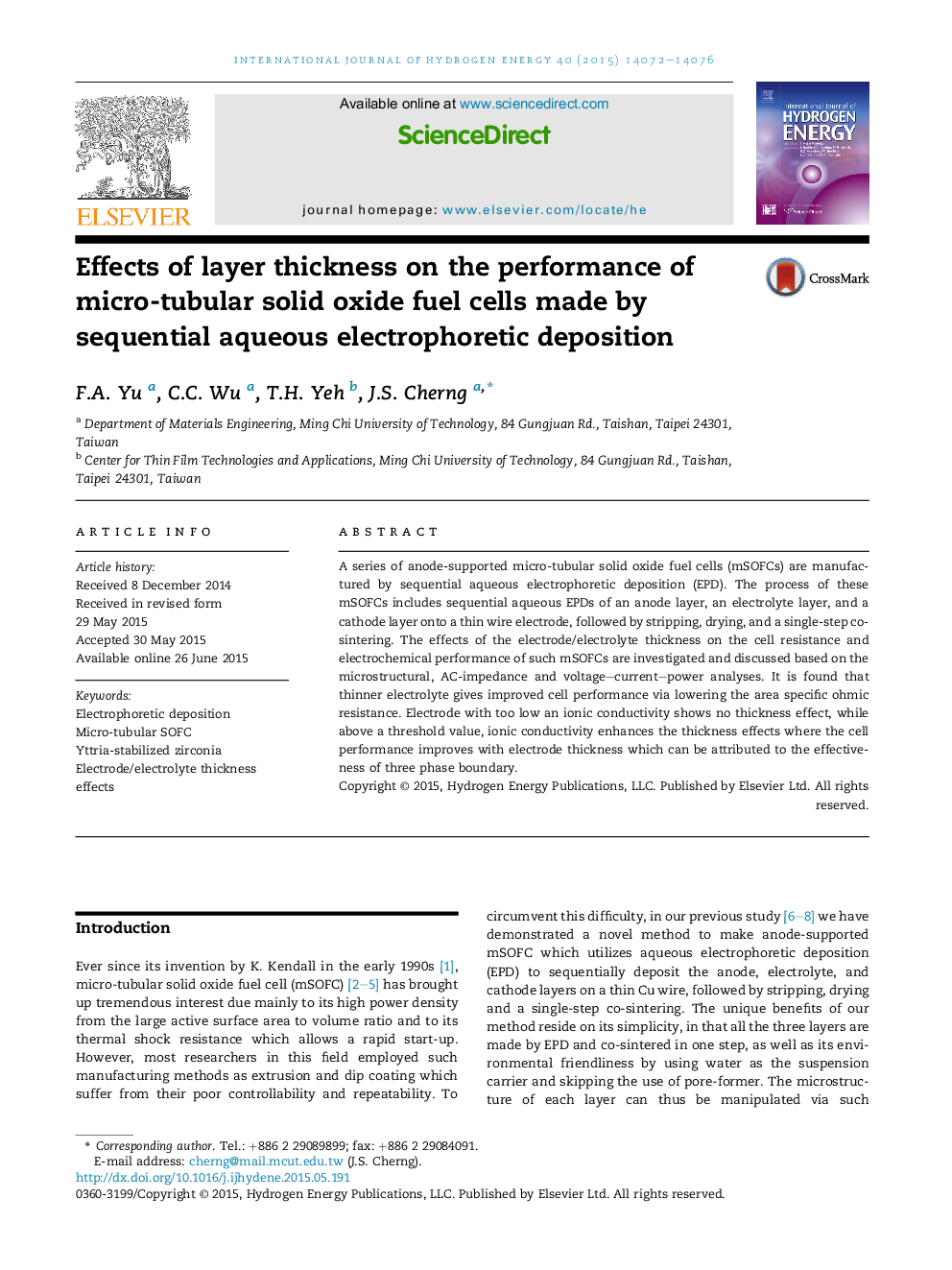| Article ID | Journal | Published Year | Pages | File Type |
|---|---|---|---|---|
| 1270467 | International Journal of Hydrogen Energy | 2015 | 5 Pages |
•Micro-tubular solid oxide fuel cells were made by electrophoretic deposition.•Thinner electrolyte improved cell performance via lowering ohmic resistance.•No thickness effect for electrode with too low an ionic conductivity.•Cell performance improved with increasing electrode thickness otherwise.
A series of anode-supported micro-tubular solid oxide fuel cells (mSOFCs) are manufactured by sequential aqueous electrophoretic deposition (EPD). The process of these mSOFCs includes sequential aqueous EPDs of an anode layer, an electrolyte layer, and a cathode layer onto a thin wire electrode, followed by stripping, drying, and a single-step co-sintering. The effects of the electrode/electrolyte thickness on the cell resistance and electrochemical performance of such mSOFCs are investigated and discussed based on the microstructural, AC-impedance and voltage–current–power analyses. It is found that thinner electrolyte gives improved cell performance via lowering the area specific ohmic resistance. Electrode with too low an ionic conductivity shows no thickness effect, while above a threshold value, ionic conductivity enhances the thickness effects where the cell performance improves with electrode thickness which can be attributed to the effectiveness of three phase boundary.
